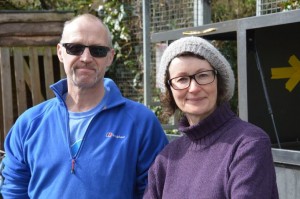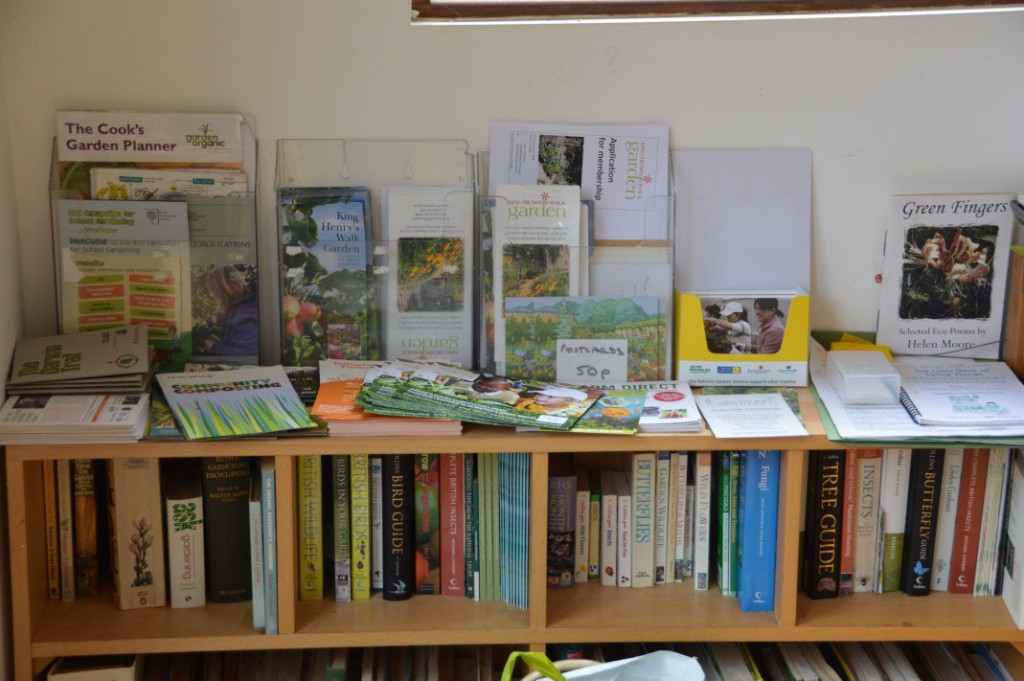As an avid garden visitor, I’m always mindful of visiting gardens either during the dormant winter season or in Spring when, despite the season’s obvious feel-good-factor, there’s often little going on in the borders. Just like those containerised perennials we purchase early in the year – pots of promise I like to call them – you have to view a garden somewhat wearing the cap of a clairvoyant and try to see the potential of what might be in that bare ground: small seedlings pushing above the soil; dead herbaceous material; mulched borders, and so on .
So it was that my first visit this year to an MPGA linked garden came quite early in April. I had chosen the award-winning King Henry’s Walk Garden in Islington, North London – a location well-served by good transport links. I quickly found my way to the site and entered through a rather lovely, heavily ornate metal gate: both aesthetic and secure!
I had been invited by Nicola Freshwater, one of the garden’s committee members, and arrived during one of their monthly volunteering sessions. I always like to enter a garden a few minutes early, in a rather stealth-like fashion, and with the aim of finding the spirit of the place: its Genius Loci if you will. Before meeting up with a busily-composting Nicola, I spent some time wandering up, down and along the garden’s narrow paths. Like so many of London’s community gardens it’s squeezed into a tight area, surrounded by roads, schools and housing. A high brick wall to one side and tall secure fencing around the remainder gives the garden a very protected feel.
Of course, in this world wide web of ours, one invaluable tool the modern community garden has at its disposal is a good website. Therefore, after having researched the history of the garden on-line, I already knew a little of its ethos and aims, its plants and people. This community garden, once a derelict site and former public park, has developed over time to offer virtually everything the gardener, or garden lover, could possibly want from an inner-city green space.
Firstly, there are of course the community growing plots. Over 65 in total and each measuring 6sqm giving access to local growers to their very own allotment patch, both fertile and south facing! Personally, I felt that the beauty of these beds was in the way they had been divided, both creatively and with character, no doubt a personal reflection of each individual gardener.
There are also several large metal containers allowing wheelchair users access to plant into these highly-raised beds.
I am sure that an aerial view of the site would reveal the curious design of the garden. Viewed from above you would see an almost key-like layout to the space, with the ornamental borders forming part of its main circular hub, before the allotment plots taper off East into a convenient wedge shape.
At its pointy end you would see the working parts of the garden: its shed, greenhouse and clay oven! Yes, that’s right – a clay oven, used under supervision at the garden’s summer events.
Also sitting in this part of the garden is its green classroom, a lovely red-cedar community room used as part of The Garden Classroom initiative, providing curriculum-linked learning to local schools. I can only imagine the innovative links that are made between the great outdoors to both literacy and numeracy. Without wishing to sound like some old fuddy-duddy, I wish that kind of learning had been available to me when I was a kid.
In terms of the way the garden is run and developed, you could say it’s founded on the two principles of sustainability and organic growing, creating and encouraging both wildlife and biodiversity. I love that in a garden! A garden should be for everyone… and everything! Only then do you get to see the real beauty of a garden’s natural cycle: predators eating pests; weeds competing with cultivars, and – quite literally – the ups and downs of all the herbaceous material appearing throughout the seasons.

I absolutely loved this technique of defoliating all the leaves from a clump of bamboo. A technique they brought back from Great Dixter.
So, after a great tour of the main garden with Nicola, my final jaunt was to see the small woodland area of Docwra’s Wood, a most unusual and rare sight in North London. Back in 2009, using funds from the Forestry Commission, volunteers set about removing 17 dangerous and diseased trees and introducing over 37 new trees, again improving the biodiversity of the site.

Using funds provided by the MPGA this bench in the woods was handcrafted by local woodman and sculptor Gary March, and several volunteers.
The wooded area continues to be carefully managed by the team, providing protection for new trees, frogs, foxes, and countless beneficial insects, not forgetting of course, that it also provides Londoners with a unique place to simply sit and relax under the cool shade of many trees.
So, let’s think…. before I sign off on this great London garden, have I remembered everything? It has some lovely, well-stocked ornamental beds – check out their extensive plant list available on their website! It has over 65 allotment plots; a strong local growing community, a greenhouse, a classroom, over 18 varieties of fruit trees, its own woodland, a pond with a crossing bridge, and much much more. My advice would be to check out the garden’s great website and look into the history of the garden and see the events being held there over the coming summer months. Also, do have a read of the many terrific horticultural factsheets they have made freely available to all. A wonderful resource!
 My thanks go to Nicola and her husband Andy for their hospitality that morning and for their kind offer of tea and cake, which unfortunately I had to decline – quite unlike me. My appreciation also goes to the entire community who continue to look after the garden – a valuable oasis of organic gardening in London N1.
My thanks go to Nicola and her husband Andy for their hospitality that morning and for their kind offer of tea and cake, which unfortunately I had to decline – quite unlike me. My appreciation also goes to the entire community who continue to look after the garden – a valuable oasis of organic gardening in London N1.
Marc Owen




